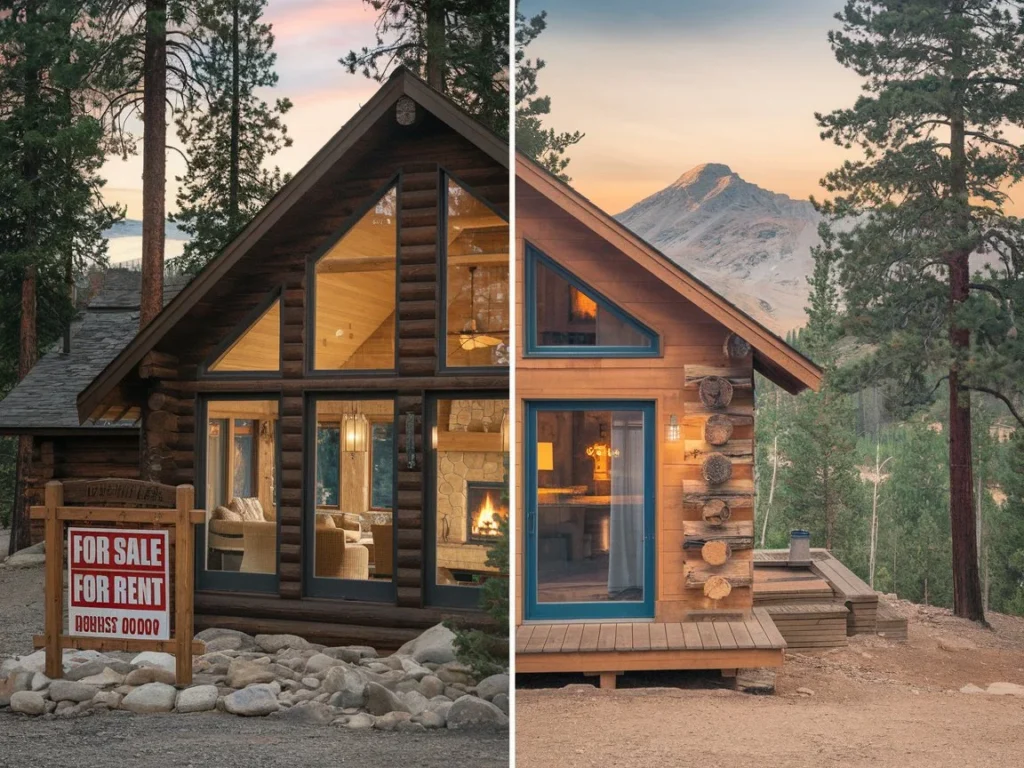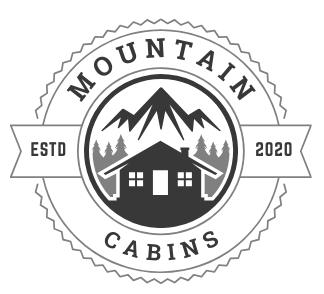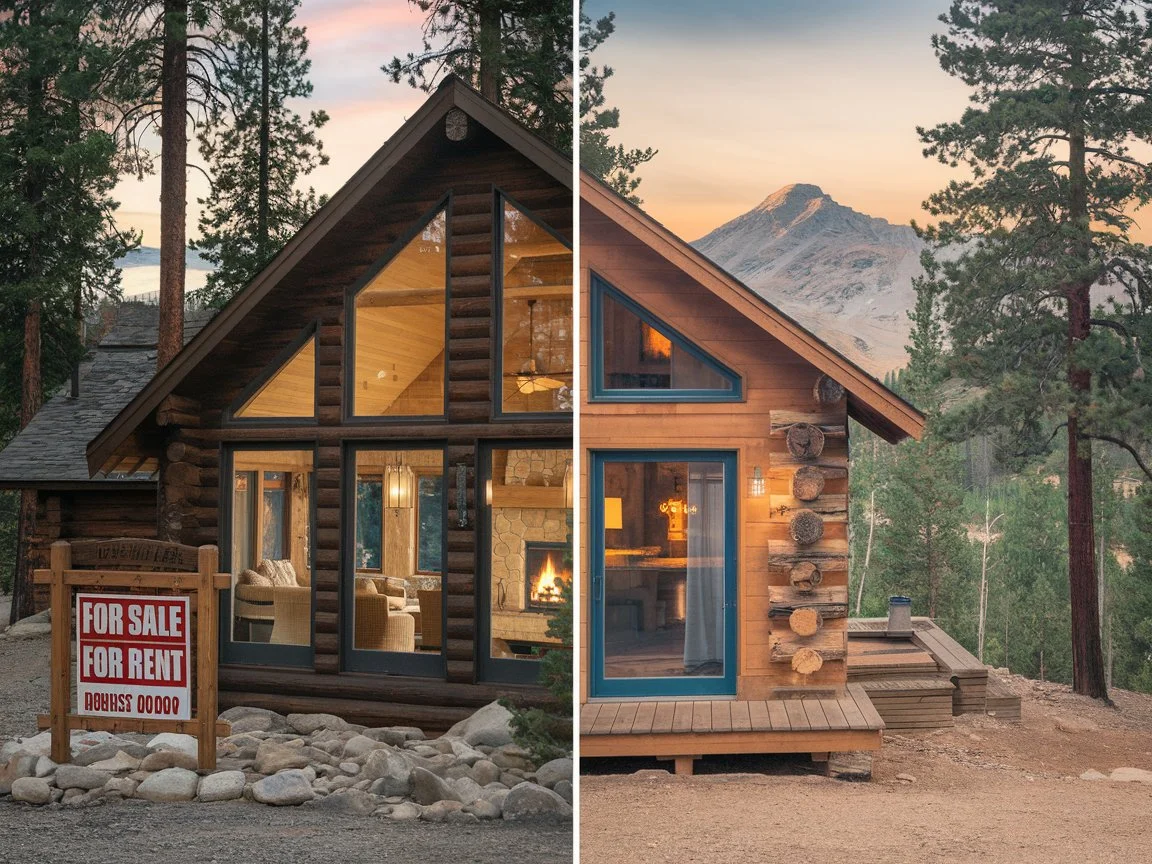
The idea of owning or renting a mountain cabin is a dream for many—a chance to escape to nature, enjoy breathtaking views, and create lasting memories. Whether you’re looking for a weekend retreat or a permanent getaway, a mountain cabin offers a unique blend of tranquility and adventure. However, deciding between renting and buying can be a daunting task, especially for beginners.
Renting a cabin provides flexibility and the opportunity to explore different locations without long-term commitment. On the other hand, buying a cabin is an investment that offers the potential for personal use, rental income, and property appreciation. Both options come with their own set of considerations, from costs and maintenance to location and lifestyle preferences.
This guide will walk you through the key differences between renting and buying a mountain cabin, helping you make an informed decision. We’ll cover everything from budgeting and location selection to maintenance tips and legal considerations. By the end, you’ll have a clear understanding of what it takes to rent or buy your dream mountain cabin.
1. Renting a Mountain Cabin: What You Need to Know
Renting a mountain cabin is an excellent way to experience the joys of cabin life without the long-term commitment of ownership. It’s a great option for beginners who want to explore different locations, test out cabin living, or simply enjoy a relaxing getaway.
- Advantages of Renting Before Buying: Renting allows you to experience different types of cabins and locations before making a purchase. It’s also a cost-effective way to enjoy a mountain retreat without the financial burden of maintenance, property taxes, or a mortgage. Additionally, renting offers flexibility—you can choose different cabins for different seasons or activities.
- Best Platforms to Find Rentals: Popular platforms like Airbnb, VRBO, and local rental agencies offer a wide variety of mountain cabins. Airbnb and VRBO are user-friendly and provide detailed listings with photos, amenities, and reviews. Local agencies often have insider knowledge of hidden gems and may offer personalized service.
- How to Read Reviews and Compare Prices: Reviews are a valuable resource when renting a cabin. Look for feedback on cleanliness, accuracy of the listing, and the host’s responsiveness. Compare prices across platforms to ensure you’re getting the best deal, and don’t forget to factor in additional costs like cleaning fees or security deposits.
- Short-Term vs. Long-Term Rentals: Short-term rentals are ideal for weekend getaways or vacations, offering flexibility and a wide range of options. Long-term rentals, on the other hand, are perfect for extended stays or those considering a trial period before buying. They often come with discounted rates and a more home-like feel.
Renting a mountain cabin is a low-risk way to enjoy the beauty and serenity of the mountains while exploring your options for the future.
2. Key Factors to Consider When Buying a Mountain Cabin
Buying a mountain cabin is a significant investment and a dream come true for many. However, it requires careful planning and consideration to ensure you make the right choice. Here are the key factors to keep in mind:
- Location: Accessibility, Climate, and Amenities: The location of your cabin is crucial. Consider how accessible it is year-round, especially in winter when snow and road closures can be an issue. Research the climate to ensure it aligns with your preferences—whether you want a snowy retreat or a sunny mountain escape. Proximity to amenities like grocery stores, hospitals, and recreational activities is also important for convenience and safety.
- Budgeting: Upfront Costs, Maintenance, and Hidden Expenses: Beyond the purchase price, factor in additional costs like property taxes, insurance, and utilities. Maintenance expenses, such as roof repairs, pest control, and landscaping, can add up over time. Don’t forget hidden costs like HOA fees or permits for renovations. Create a detailed budget to avoid financial surprises.
- Off-Grid vs. Fully Connected Cabins: Decide whether you want an off-grid cabin for a true escape or a fully connected one with modern amenities. Off-grid cabins often rely on solar power, wells, and composting toilets, offering a sustainable lifestyle. Fully connected cabins provide electricity, running water, and internet, making them more comfortable for year-round living.
- Seasonal Challenges and Property Upkeep: Mountain properties face unique challenges, such as snow removal, wildfire risks, and wildlife encounters. Regular upkeep, like clearing gutters, sealing windows, and inspecting the roof, is essential to protect your investment. Consider hiring local services for maintenance if you don’t live nearby.
By carefully evaluating these factors, you can make an informed decision and find the perfect mountain cabin to call your own.
3. Financing & Legal Considerations
Buying a mountain cabin involves more than just finding the perfect property—it also requires navigating financing and legal considerations. Understanding these aspects will help you make a well-informed decision and avoid potential pitfalls.
- Mortgage Options for Vacation Homes: Financing a mountain cabin differs from buying a primary residence. Vacation home loans often require a higher down payment (typically 10-20%) and may have slightly higher interest rates. Explore options like fixed-rate mortgages, adjustable-rate mortgages, or even home equity loans if you already own property. Consulting a financial advisor or mortgage specialist can help you find the best option for your budget.
- Zoning Laws and Property Regulations: Mountain properties are often subject to strict zoning laws and regulations. These may dictate how you can use the land, whether you can build or renovate, and even the types of structures allowed. Research local zoning laws and check for any restrictions on short-term rentals if you plan to use the cabin as an income property.
- Insurance for Mountain Homes: Mountain cabins face unique risks, such as wildfires, landslides, and heavy snowfall. Standard homeowner’s insurance may not cover these hazards, so consider additional coverage like wildfire insurance or flood insurance. Work with an insurance agent familiar with mountain properties to ensure you’re fully protected.
- HOA and Community Fees: If your cabin is part of a homeowners’ association (HOA) or a gated community, you’ll likely need to pay monthly or annual fees. These fees often cover shared amenities like roads, security, and maintenance. Review the HOA’s rules and fees before purchasing to ensure they align with your expectations and budget.
Understanding these financing and legal considerations will help you navigate the complexities of buying a mountain cabin and ensure a smooth process.
4. Making the Most of Your Mountain Cabin Investment
Whether you’re renting or buying, a mountain cabin can be a rewarding investment. Here’s how to maximize its value and enjoyment:
- Personal Use vs. Rental Income: If you’re buying, decide whether the cabin will be for personal use, a rental property, or both. Renting it out when you’re not using it can help offset costs, but it also requires additional management and upkeep. Platforms like Airbnb and VRBO make it easy to list your cabin, but be prepared for the responsibilities of being a host.
- Maintenance Tips for Longevity: Regular maintenance is key to preserving your cabin’s value and functionality. Schedule seasonal check-ups for the roof, plumbing, and heating systems. Clear debris from gutters, trim trees to reduce wildfire risks, and inspect for pests. If you live far away, consider hiring a local property manager to handle upkeep.
- Enhancing the Cabin Experience: Add personal touches to make your cabin feel like home. Invest in cozy furniture, outdoor seating, and decor that complements the natural surroundings. If you plan to rent it out, consider amenities like a hot tub, fire pit, or board games to attract guests.
- Sustainable Practices: Mountain cabins are often in environmentally sensitive areas, so adopting sustainable practices is important. Use energy-efficient appliances, install solar panels, and practice responsible waste disposal. If you’re off-grid, explore rainwater collection and composting systems.
By taking these steps, you can ensure your mountain cabin remains a cherished retreat for years to come.
5. Making the Right Decision: Rent or Buy?
Choosing between renting and buying a mountain cabin depends on your lifestyle, financial situation, and long-term goals. Here’s how to weigh the pros and cons and make the right decision for you:
- Weighing the Pros and Cons: Renting offers flexibility, lower upfront costs, and the chance to explore different locations without long-term commitment. It’s ideal for occasional getaways or those unsure about cabin life. Buying, on the other hand, provides a permanent retreat, potential rental income, and property appreciation. However, it comes with higher costs, maintenance responsibilities, and less flexibility.
- Best Scenarios for Renting vs. Buying: Renting is perfect for travelers who want variety and minimal responsibility. It’s also a great option if you’re not ready to commit financially. Buying is better for those who plan to use the cabin frequently, want to build equity, or are looking for a long-term investment.
- Tips for Testing the Waters Before Committing: If you’re considering buying but aren’t sure, start by renting cabins in different locations and styles. This will help you understand what you value most in a mountain retreat. You can also try long-term rentals to experience cabin living for an extended period before making a purchase.
By carefully evaluating your needs and preferences, you can confidently decide whether renting or buying a mountain cabin is the right choice for you.
Whether you choose to rent or buy, a mountain cabin offers a unique opportunity to escape, recharge, and connect with nature. Renting provides flexibility and a chance to explore different locations, while buying offers a long-term investment and a personal retreat. By considering factors like budget, location, and lifestyle, you can make an informed decision that aligns with your goals.
If you’re new to mountain cabin living, start by renting to test the waters and discover what you value most in a getaway. For those ready to commit, buying a cabin can be a rewarding investment that brings joy for years to come.
No matter which path you choose, remember to research thoroughly, plan ahead, and embrace the adventure. Mountain cabin living is about creating memories, enjoying the beauty of nature, and finding peace away from the hustle and bustle of everyday life.
So, take the first step today—your dream mountain cabin awaits!
For Renting a Mountain Cabin
- Airbnb
https://www.airbnb.com
A popular platform for finding unique mountain cabins for short-term or long-term stays.
For Buying a Mountain Cabin
- Zillow
https://www.zillow.com
A comprehensive real estate platform for buying mountain cabins, with filters for location, price, and amenities.

